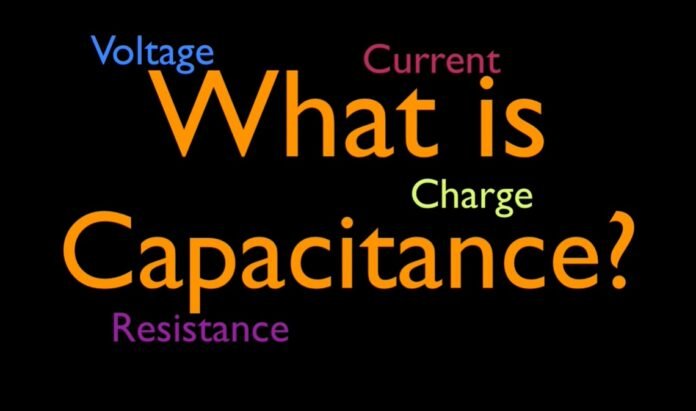Introduction
Unit of Capacitance is primarily measured in the units of coulombs and the letter Q symbolises it because it is determined by an electrical charge. The capability of a circuit or component to gather and store energy in the structure or form of an electrical charge is called capacitance.
Parallel plate capacitors comprise two plates of a conducting material which is usually a thin metal stuffed between an insulator that is formed of film, ceramic, glass, or some other material including even air. These capacitors are accessible in various sizes and shapes.
They are energy-storing devices also called in marine, automotive, and aviation industries sometimes as condensers. Farad is considered the Unit of Capacitance (F in abbreviation).
What do you mean by Farad?
In SI or the International System of Units, a Farad is the standard unit of capacitance. Farads, (µF) microfarads, or (nF) nanofarads is the value in which most of the electrical capacitors are expressed. It is named after Michael Faraday, an English scientist, and shows the capability of a substance to grasp an electrical charge. 1 F is equal to s4 x A2 / kg x m2, where ‘s’ represents second, ‘A’ represents ampere, ‘kg’ represents kilogram, and ‘m’ represents metre.
A possible difference is formed between two uncharged conductors when an electric charge moves between the two of them or it can also happen when the quantity of electricity charged rises upon a conductor more than its potential. Moreover, one of the conductors will become negatively charged and the other one will become positively charged.
Mathematically, capacitance is expressed as C = Q/V where (Q) stands for the quantity of charge and (V) on any one of the conductors to the potential difference between the two.
Unit of Capacitance
The SI Unit of Capacitance is Farad (F) and the CGS unit of capacitance is (cm) centimetre. The dimensions of the unit of capacitance are [M-1 L-2 T4 A2]. In this formula M stands for Mass, L stands for length, A stands for current and T stands for time.
In the terms of voltage and charge, the basic formula for capacitance is C= Q/V. In this formula C stands for capacitance measured in Farads, Q stands for charge measured in coulombs and V stands for applied voltage measured in volts.
How does a capacitor function?
During the flowing current in an electric circuit, the capacitor is responsible for collecting the energy/voltage. The equal charge is held by both plates and as one positive plate is responsible for collecting a charge, an equivalent amount of charge flows off to the other (negative) plate.
The ratio of an electric charge on all of the given conductors to the potential difference between the two of them is that in which capacitance is expressed. In the case of a switched-off circuit, a capacitor can preserve the energy it has collected. However, chances of slight leakages usually happen.
A large quantity or amount of capacitance is Farad (F). Most of the time, electrical devices in the household include those capacitors that generate only a fraction of (F) Farad, meanwhile, supercapacitors can retain or store quite large electrical charges of thousands of (F)farads.
What do you mean by capacitor and capacitance?
A capacitor (also called an electric condenser) is a device of two terminal electric elements that can retain energy and electronic charge. The capacitors are designed in this way so that they can rise and enhance the effect of the capacitance.
Thus, they are responsible for properties like shape and size. Each capacitor has a mixture of two conductors which are separated by an insulator (called a dielectric). Let’s say that a conductor has potentials such as V1 and V2 and charges such as Q1 and Q2.
The potential difference between the two is V = V1 – V2 and charges between the two conductors in practice, Q and – Q, and Q is considered the charge of the capacitor. By connecting the conductors to the two terminals of batteries, it can be charged.
Thus, the formula, C = Q/V in which Q is proportional to V and the ratio between the two (i.e., Q and V) is a constant C. The C (called the capacitance of the capacitor) is independent of Q or V.
Recommended Articles:
Unit of Conductivity
Unit of Density
Unit of Distance
Unit of Electric Field
Unit of Electric Current
Farad (F), named after an English scientist that is Michael Faraday. It is a unit of electrical capacitance that can hold or retain an electric charge. It is expressed in the physical units system of m, kg, and second. In the case of CGS units, we can measure the unit of capacitance in cm because objects that are large or big tend to have big capacitance. The potential is measured in esu/cm and esu is responsible for measuring the charge. A coulomb or C is called this because of the name of Charles – Augustin de Coulomb. In SI or the International System of Units, it is the standard unit of an electric charge. Approximately, the amount of 1 coulomb is equivalent to the electric charge that is 6.24 x 1018 electrons and protons. The conversion of Farad in uF is 1F =1000000µF. The formula of a capacitor is C = Q/V, where the capacitance or C is the ratio between the quantity or amount of charge (Q) on one of the two conductors to the potential difference (V) between the two conductors. Unit of Capacitance FAQs
What is the Unit of Capacitance named after?
What do you mean by the CGS unit of capacitance?
What is called 1 coulomb and why?
How many µF will there be to be a Farad?
What is the basic formula of a capacitor?
